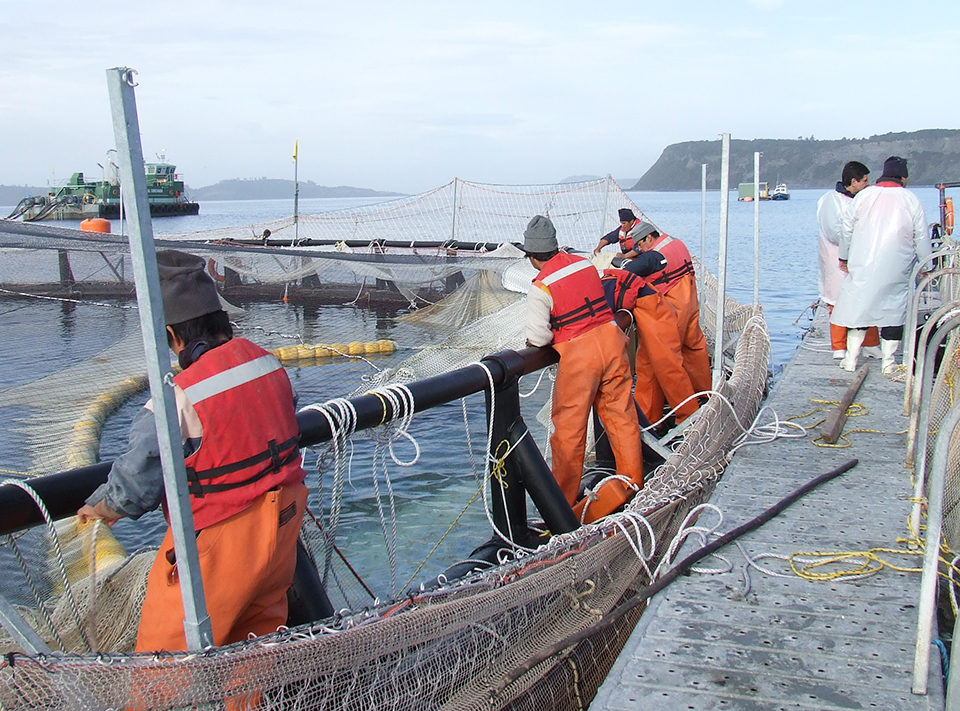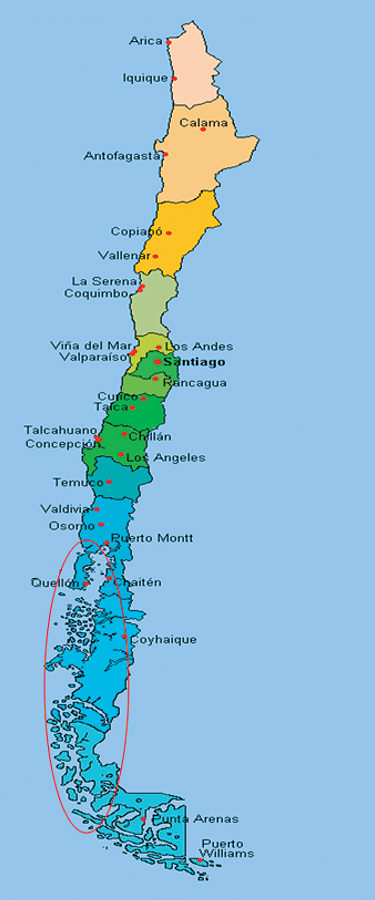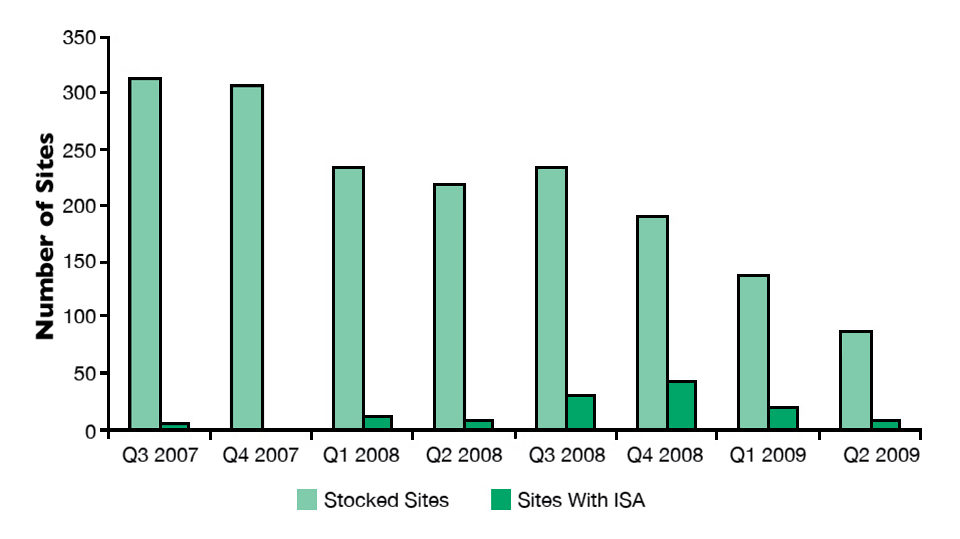New controls, regulations drive recovery trend


After more than two decades of impressive growth, the Chilean aquaculture industry is facing a crisis due to the effects of infectious salmon anemia (ISA) on its Atlantic salmon (Salmo salar). Since the second quarter of 2007, ISA has caused an estimated production drop of around 50 percent.
ISA is just the last in a series of environmental and fish health problems that have affected salmon farmers in Chile since 2004. During that period, biomass rose, particularly in some coastal areas of the 10th region, such as east of Chiloé Island, where around 40 percent of the total salmon production concentrated.
The end of 2006 saw an increase in sea lice (Caligus rogercresseyii), probably due to a combination of factors, such as higher water salinity and farm concentration, and poorer fish health. The parasitic sea lice spread rapidly through the 10th region and then the 11th, reaching levels of infestation that reached 30-50 parasites/fish in some cases.
Treatment with emamectine benzoate proved ineffective due to the development of resistance. Many fish were stressed, immunologically depressed and externally injured, which allowed rapid penetration of opportunistic pathogens.
In July 2007, in the middle of the efforts to control the sea lice, the finding by Marine Harvest Chile of salmon with ISA at a central Chiloé site was confirmed by local and foreign reference laboratories. Only a few days later, other sites reported ISA outbreaks, and since then, the ISA virus has dispersed in the 10th, 11th and 12th regions, despite contingency measures rapidly enacted by the government and the voluntary measures employed by the farm companies.
ISA study
An epidemiologic study developed from the beginning of the ISA problem by Marine Harvest along with the Chilean lab Biovac and Dr. Fred Kibenge’s lab on Prince Edward Island recently showed that the Chilean ISA virus is genetically unique, although close to a virus reported in 1996 in Norway. Using the Backtrack program, it was estimated that the virus presented in Chile as early as 1996 (± 2 years) and would exhibit a strong diversification around 2005.
The virus found in Marine Harvest Chile’s first reported case in 2007 was not the oldest strain among the types detected in Chile. This suggested that the virus was present in the Chilean environment for several years at relatively low prevalence and load, and caused mortalities that could not be associated with known diseases.
Effective controls
At present, the sea lice are under control due to a successful control plan. Also, the susceptible fish biomass in the sea has decreased dramatically (Fig. 1). In addition, a number of new regulations and voluntary measures require zone management programs, strict egg import control, complete biosecurity and other changes that are promoting a new production model in the industry. Although biological improvements are becoming evident, further regulation and company investment will be needed.
The crisis will be controlled, and the production trend started to change during the second half of 2009. Stocking reactivation will start in 2010.
Perspectives
The new industry will have new regulations, a new enforcement system, new voluntary measures and, at the end, a new production model reflecting profound changes that will allow Chile to again be an industry leader, not only in quantitative terms but also qualitative.
Knowledge of the dynamic environment and its carrying capacity will be fundamental for the new industry success. Without these elements, Chile will not be able to manage its sanitary contingencies in the long term and will face the risk of new crises as profound as the present one.

(Editor’s Note: This article was originally published in the May/June 2010 print edition of the Global Aquaculture Advocate.)
Now that you've finished reading the article ...
… we hope you’ll consider supporting our mission to document the evolution of the global aquaculture industry and share our vast network of contributors’ expansive knowledge every week.
By becoming a Global Seafood Alliance member, you’re ensuring that all of the pre-competitive work we do through member benefits, resources and events can continue. Individual membership costs just $50 a year. GSA individual and corporate members receive complimentary access to a series of GOAL virtual events beginning in April. Join now.
Not a GSA member? Join us.
Author
Related Posts

Responsibility
A look at integrated multi-trophic aquaculture
In integrated multi-trophic aquaculture, farmers combine the cultivation of fed species such as finfish or shrimp with extractive seaweeds, aquatic plants and shellfish and other invertebrates that recapture organic and inorganic particulate nutrients for their growth.

Aquafeeds
Alternative feed ingredients support continued aquaculture expansion
Identifying sources for essential macro- and micronutrients is important, as well as understanding how best to manufacture feed to required physical specifications when using these new raw materials.

Innovation & Investment
AquaGen CEO: Genomics are transforming aquaculture
The CEO of AquaGen knew that the Norwegian research group’s work in genomics was key to the salmon industry’s future. And that was before she even worked there.

Intelligence
An overview of mussel culture in Chile
While Chile’s mussel industry has entered a growth phase, challenges remain, especially in the seed production and grow-out components. This contrasts with the well-developed nature of the country’s processing plants and marketing outlets.


